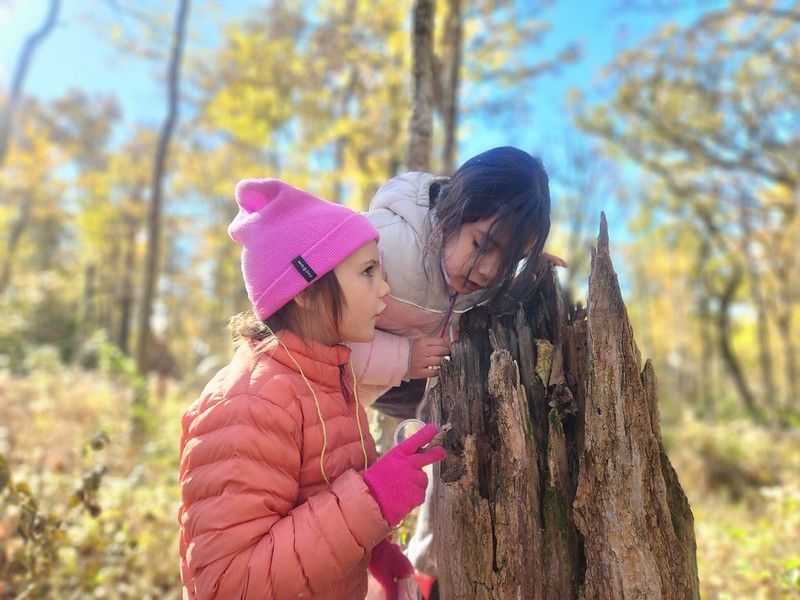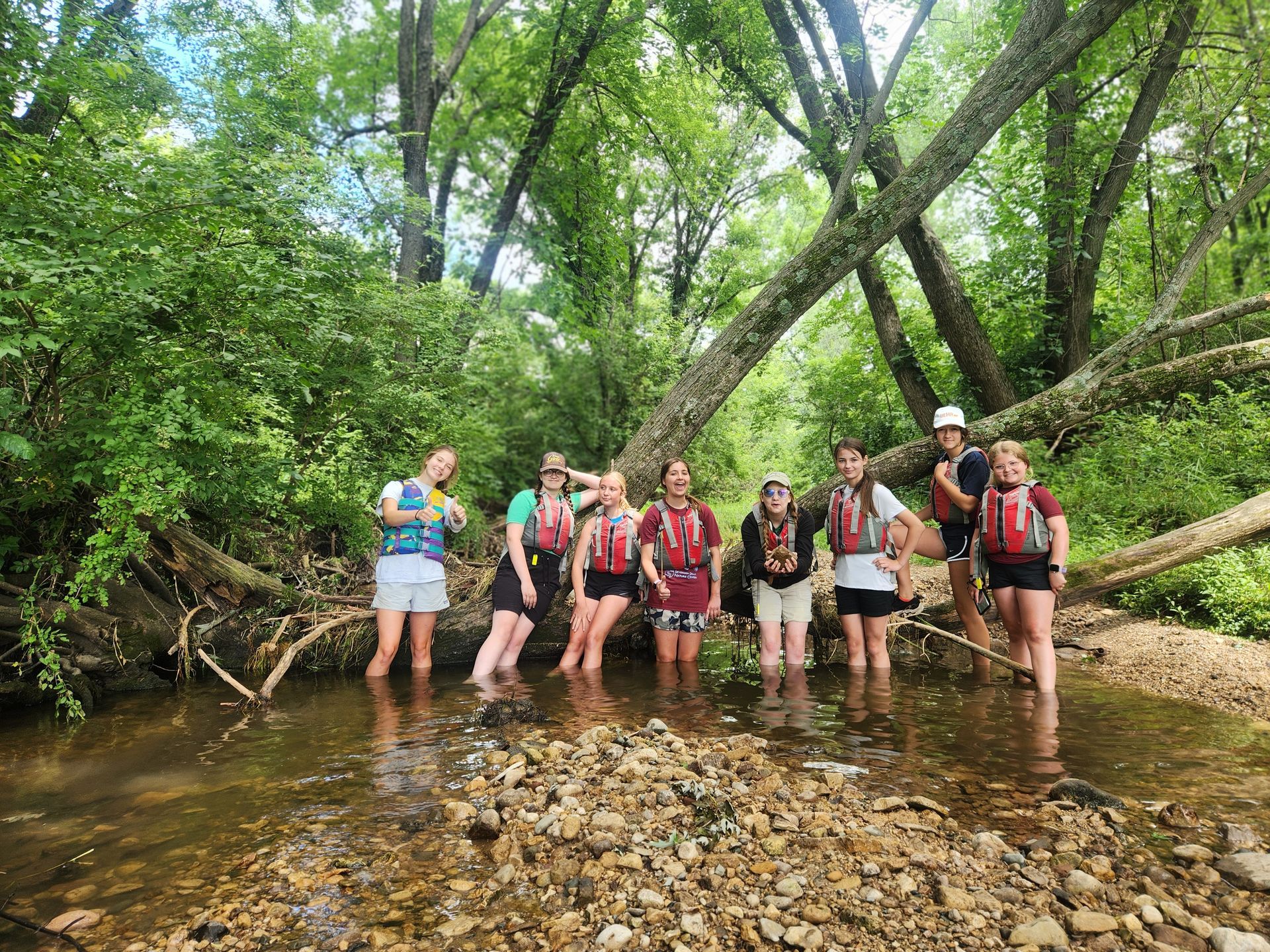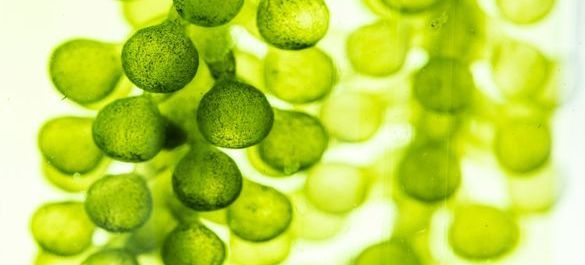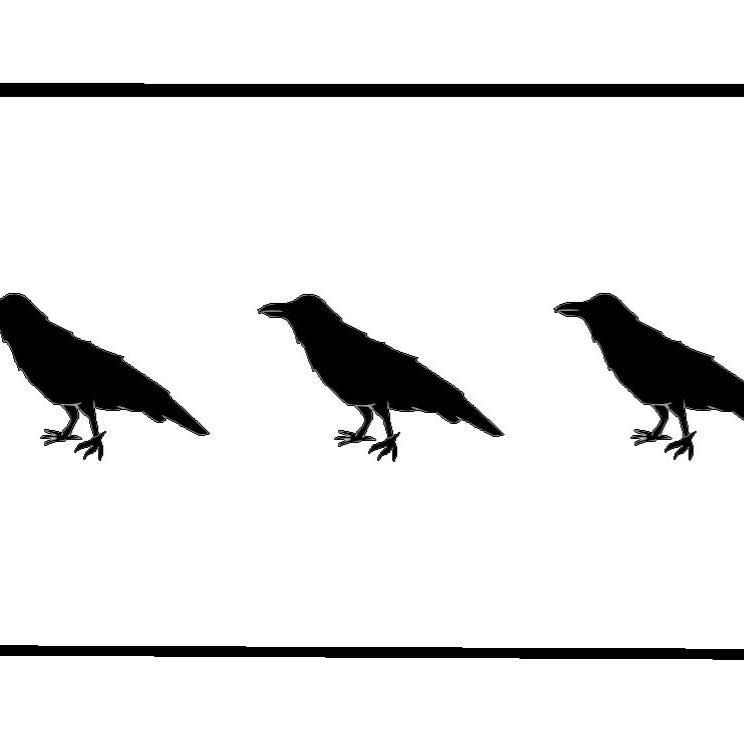FIELD NOTES BLOG
Birds of Severson Dells and Northern Illinois
What birds can you see in Northern IL and at Severson Dells Nature Center?
Severson Dells Nature Center is a wonderful place for any bird watcher to visit, with a variety of habitats for different species to thrive. Diving into these habitats, Severson Dells offers prairie, wetland, and forested ecosystems. Our forests are valuable for providing important habitat for nesting and perching birds, while prairies here can offer important spaces for grassland birds. Finally, our amazing wetlands at Severson Dells allow Anseriformes to thrive, common waterfowl such as geese, swans, and ducks. These clusters of habitats are often referred to as habitat diversity, and make way for some amazing birds to call home. Another great area many people are aware of is the Elliot golf course, with restoration right around the corner we are already seeing many amazing species call this space home! Let’s dive into some of our common and uncommon bird species that inhabit Northern Illinois, and explain tips on ways you can spot them in your neighborhood or a local preserve!
Common Grackle
Let’s start with our amazing Common Grackle! These common blackbirds are a familiar sight here in northern Illinois, often appearing in open woodland, marshes, suburban areas, and agricultural fields. These birds have diets of omnivores, meaning they will forage for insects, seeds, and fruits. Some commonly mistake Common Grackles for Crows, though some physical differences between them are their size and features. Common Grackles grow to be 11 to 13 inches long with a wingspan of 14.2 to 18.1 inches in length! Features of these birds have an amazing iridescent hue in light, often appearing a deep blue or purple. Grackles are known to breed in the central and northeastern regions of the United States and Canada, with males establishing territory in spring. Breeding season for these birds range from early spring to late fall, during this time males will become territorial with identifying calls or chirps. Males during the breeding season will additionally perform stunning elaborate dances for female Grackles in hopes of securing a mate. You can best see these birds scanning the ground, low bushes, and mid trees where they may be foraging food. Another great way to see Common Grackles are in murmurations, which are amazing clusters of blackbirds often appearing cloud-like. These birds, though plentiful, are beyond a doubt an amazing pleasure to watch! Learn more about Grackles at
allaboutbirds.org!
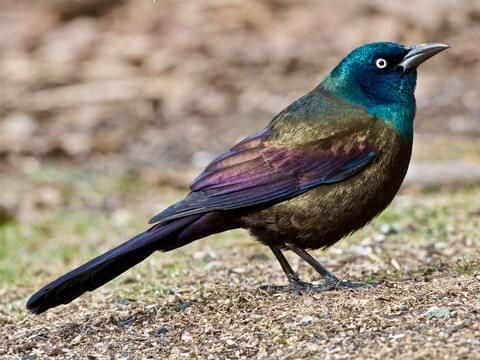
Adult male, © Jack & Holly Bartholmaie, eBird S44299158, Macaulay Library ML 93138231
Red-winged Blackbird
One of my favorite birds is the Red-winged blackbird! But what makes these birds so special? For starters these amazing birds have brilliant red shoulders called epaulets, followed by a coat of beautiful black feathers. Females tend to look dramatically different, with brown feathers, streaks of creamy white, and mini brown epaulets. These blackbirds range in smaller sizes compared to our Common Grackle, ranging at 7 to 9 inches long and wingspans of 12 to 16 inches in length. And it's not just looks that distinguish them! Male Red-winged blackbirds are extremely melodic, with territorial songs including loud and musical sounds of “conk-la-lee” that are difficult to overlook. Red-winged blackbirds are breeders in Canada and year round residents within the United States, with males setting territories in spring much like the Grackle. Breeding season can range from April through early July for these birds. What's interesting about their breeding habits is that they are highly polygynous, with some males having 15 mates! Another similarity between the recently mentioned Common Grackle is that our Red-winged blackbird is also an omnivore, relying on foraging insects, seeds, and fruits for food. These birds enjoy wetlands, marshes, and shrubs where they can best forage and nest. When searching for these birds it's best to watch for beautiful red epaulets, and melodic songs within brushes and trees. Red-winged blackbirds are great for seasoned bird watchers or someone just starting out, and are always a pleasure to see in our wetland habitats. Learn more about Red-winged Blackbird at allaboutbirds.org!
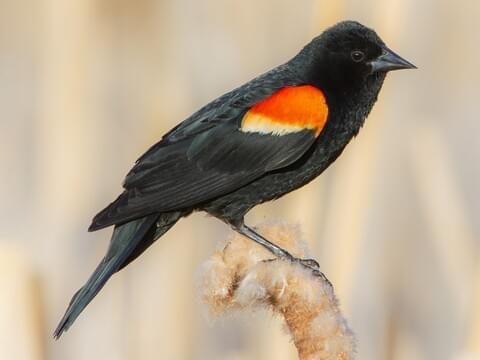
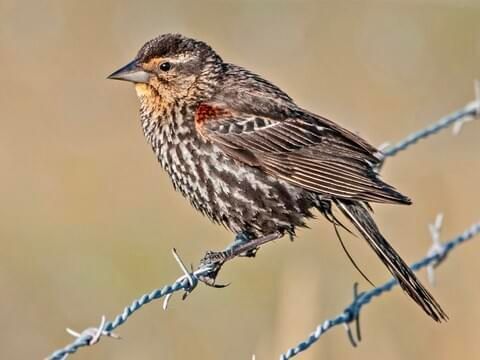
Breeding male (Red-winged) © Connor Charchuk, eBird S56169389, Macaulay Female (Red-winged) © Andrew Simon, eBird s58906957, Macaulay Library ML Library ML 158001791 172808941
American Robin
Robins are one of our most common backyard neighbors, everyone at one point or another living in the United States has seen one before. These birds may not be most people's favorite, though they are extremely important and valuable birds. American Robins are recognizable by their red breasts and brown backs, commonly being sighted in backyards, parks, and woodlands. Robins are intelligent and adaptable birds, often having been observed using tools for foraging for food, and nesting in a variety of spaces. Nesting locations can include dense leaves, gutters, eaves, and on or in buildings. During the breeding season of April to July females will start preparing their nests, constructing cup shaped bowls made of twigs, grasses, and mud. Due to their adaptability and excess of human materials, we are seeing some robins use plastics and other manmade materials for nesting. Actively being territorial birds, they can defend their nests from predators larger than themselves. You have most likely heard an angry robin mom chirping at you taking the trash out. Though on the other hand they can be extremely social birds often preferring to travel in flocks, they can't decide on one. Diets for robins consist of opportunistic omnivores, meaning they “take what they can get”. Often this includes insects, seeds, fruits, and some misc foods; with earth worms being a staple in their diets. When hunting for worms, robins have an interesting technique of running several steps and abruptly stopping to search for prey. These birds are often recognized for motivating the saying “ early bird gets the worm” during the 17th century. Though common, these birds have a lot of unique habits and features that are a thrill to watch, whether it’s in your neighborhood or your local forest preserve. Learn more about the American Robin at allaboutbirds.org!
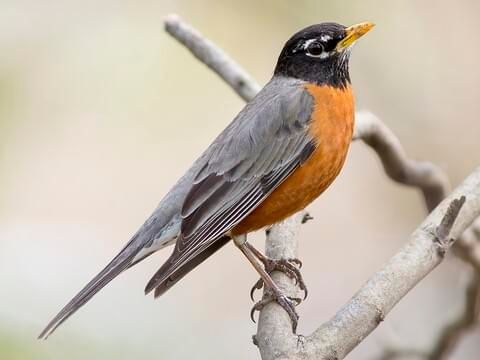
Adult male, © Alex Eberts, eBird S67047805, Macaulay Library ML 222821411
While it’s been amazing to hear about our common feathered friends, not all of us know about some unusual and infrequent birds that call Severson Dells home or pass through! Whether it’s year rounders or migratory birds, let us take a different trail to learn more about our not-so-familiar bird species that can wonder these parts of the region!
Yellow-throated Vireo
Our first uncommon bird to see here in northern Illinois is the Yellow-throated Vireo! A forest bird breeding in central and eastern regions, migrating from tropical areas in the Texas and Florida regions, while nonbreeding in parts near the equator such as eastern Mexico. These birds are small, ranging in sizes of 4.3 to 5.1 inches long, with wingspans of 7.9 to 8.7 inches in length. When it’s quiet listen for their song, Yellow-throated Vireos fill the air with beautiful melodies of “see-me, see-me” sounds. Breeding for these birds happens in the months of early April and ends by mid September, preferring areas to nest within Oaks and Maples along creeks and streams. Pickiness exists in the world of these birds, and often that includes these nesting spaces needing to be under a canopy of trees for cover. This makes foraging easier for these birds who have a diet of mostly insects, where they will forage by hopping from tree to tree. When spotting these birds, head to old forests with deciduous trees, meaning trees that lose their leaves at the end of each growing season. Scan the upper canopy of the trees mid sections during spring and fall periods. They tend to be busiest foraging in the early mornings and late afternoons! Learn more about Yellow-throated Vireos at allaboutbirds.org!
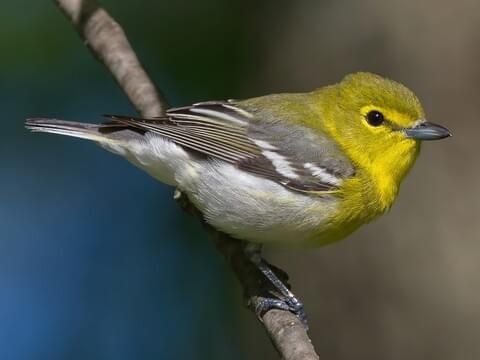
Adult, © Todd Fellenbaum, eBird S36652605, Macaulay Library ML 130575411
Hooded Warbler
Hooded Warblers are a stand out bird species! Having amazing feather patterns, males showcase black hooded heads and throats, with females having brilliant yellow cheeks, and an absent hood, with some cases appearing olive green. Size ranges smaller with these birds at 5.1 inches long and a wingspan of 6.9 inches in length, making them a harder species to spot out when birding. Though they live in the eastern regions of the United States, they can visit a few parts of the central midwest, such as Northern Illinois and Eastern Wisconsin. Reasons for this are that these birds are migratory, often relocating to tropical regions such as Florida and eastern Texas for winter much like the Yellow-throated Vireo. Habitats can include forests, spice brush, and mountain ranges of up to 3,660 feet above sea level! Great times to spot Hooded Warblers are during the breeding season in May throughout July. But why? Breeding season is when you will hear their mating and territorial calls! These unique birds sound like soft ringing, and often build nests in shrubby clearings. Another great way to spot Hooded Warblers are by searching in partially covered vegetation, and foliage where they might be hunting for food. Diets for them are heavily reliant on that of an insectivore, often eating insects, spiders, and other small arthropods. Even though they can be a tough species to spot, they are a stunning find here in Northern Illinois. Learn more about the Hooded Warbler at allaboutbirds.org!
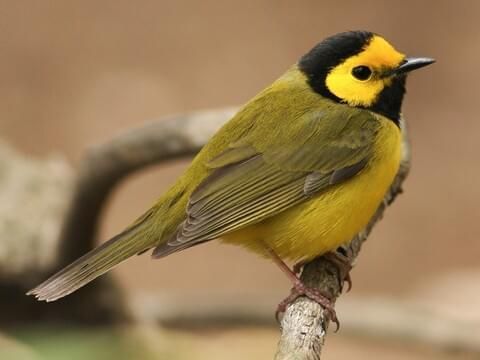
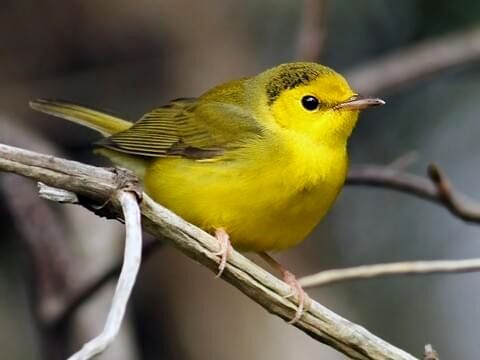
Adult male © Evan Lipton, eBird S18074296, Macaulay Library ML 2796504 1 Adult Female, © Luke Seitz, eBird S8897755, Macaulay Library ML 61066941
Henslow’s Sparrow
Henslow’s Sparrows are an interesting migratory bird that have patterns of tan and black, with greenwashed faces. These birds are consistently moving across the central, east, and southeastern parts of the United States. Breeding in the north central midwest, and migrating from the mid south region near Tennessee. Populations of Henslow’s Sparrows were densely located within central prairies of the United States and Atlantic coastal marshes; as land disappeared for agriculture they then moved to newly restored grasslands. Henslow’s Sparrows thrive in native or restored habitats consisting of wet meadows, lowland prairies, and pastures. Though as native land disappears, these birds adapted by moving to cultivated hayfields and fire maintained pine savannas. Another fascinating location that observations have shown us are that these sparrows are using reclaimed fields of large dense grasslands along the Ohio river basin. Why? To reclaim a resourceful habitat, showcasing amazing adaptability skills! Habitats like these just mentioned, give the Henslow’s Sparrow important access to foods within their diets. Often these amazing birds will feed on insects such as grasshoppers, beetles, and caterpillars. During winter, their diet changes as insects die, then turning to foraging seeds from sedges, ragweed, and wiregrass. Henslow’s sparrows can be picky when it comes to where they spend time! They are semi colonial on nesting territories, meaning they are partially independent, though not fully. During the breeding season, nesting pairs will build close by, while still maintaining nonoverlapping territories separated by buffers they deem necessary. You can best spot these amazing birds at dawn and dusk during the months of June and July, scanning prairies and forest edges! Learn more about the Henslow's Sparrow at allaboutbirds.org!
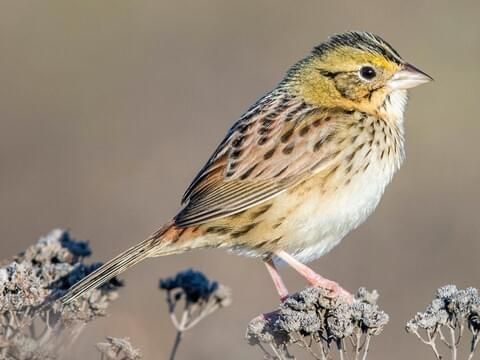
Adult, © Jeff Timmons, eBird ML55548671, Macaulay Library ML

RECENT ARTICLES
